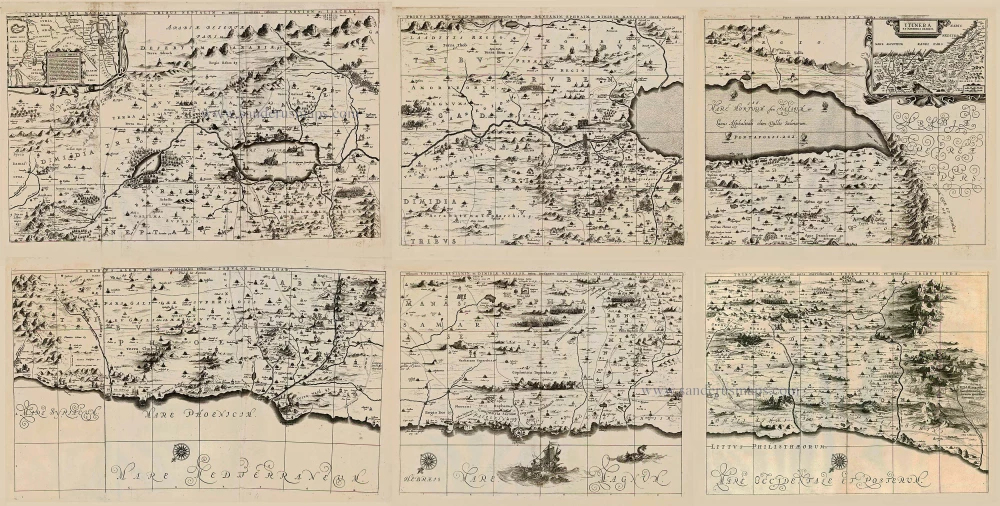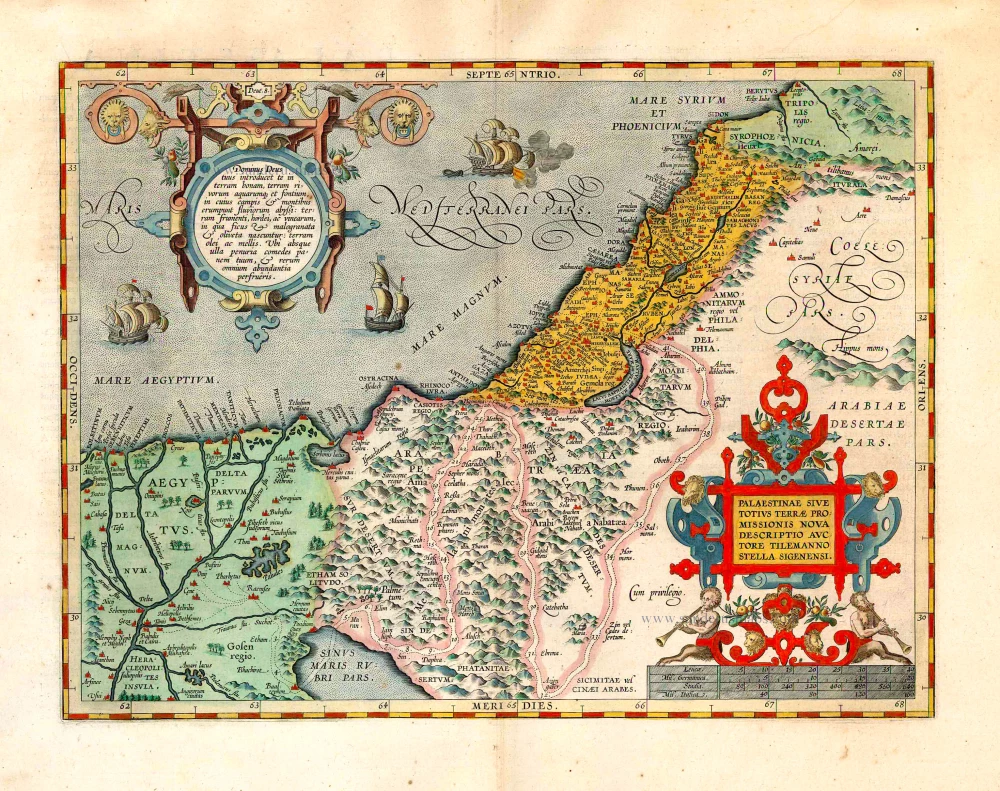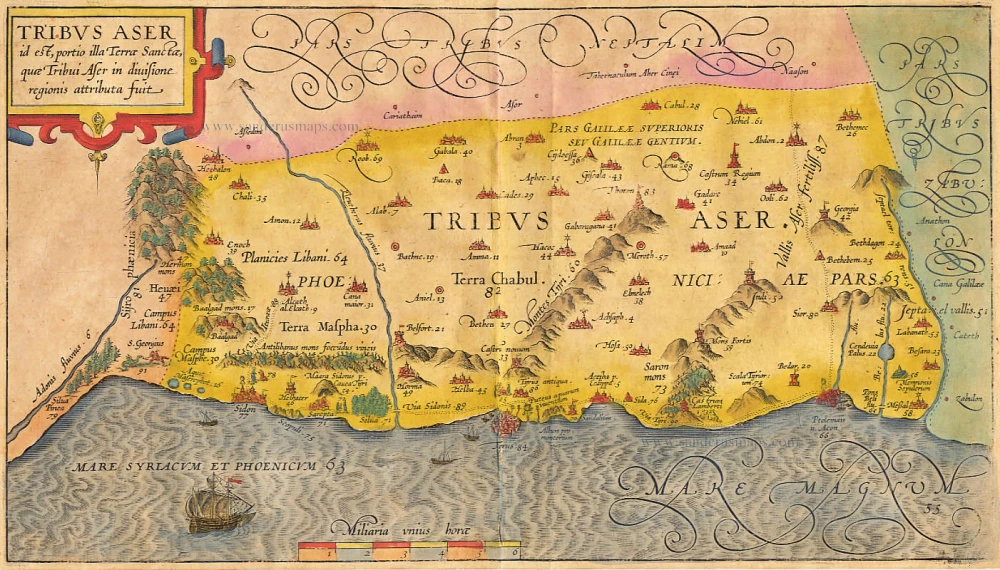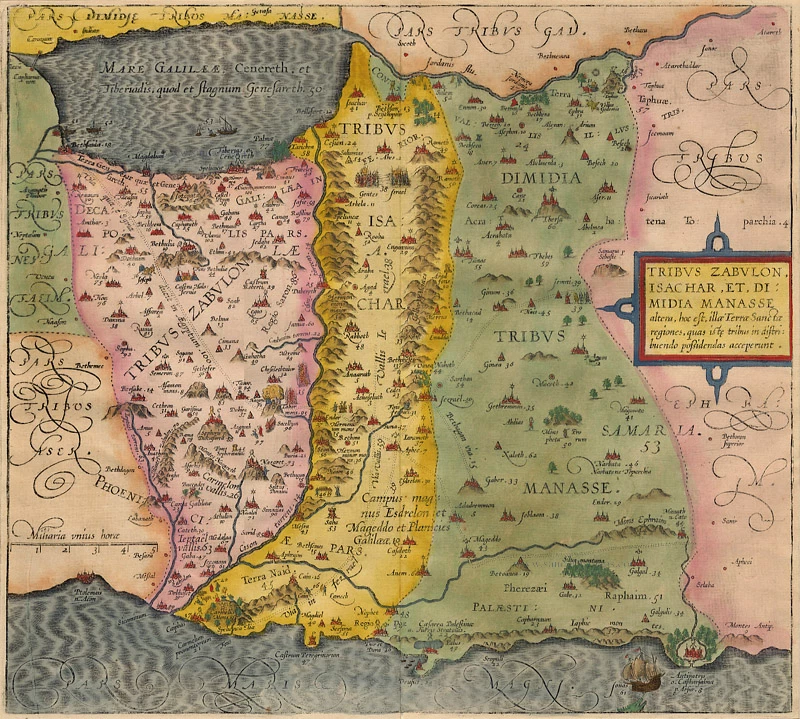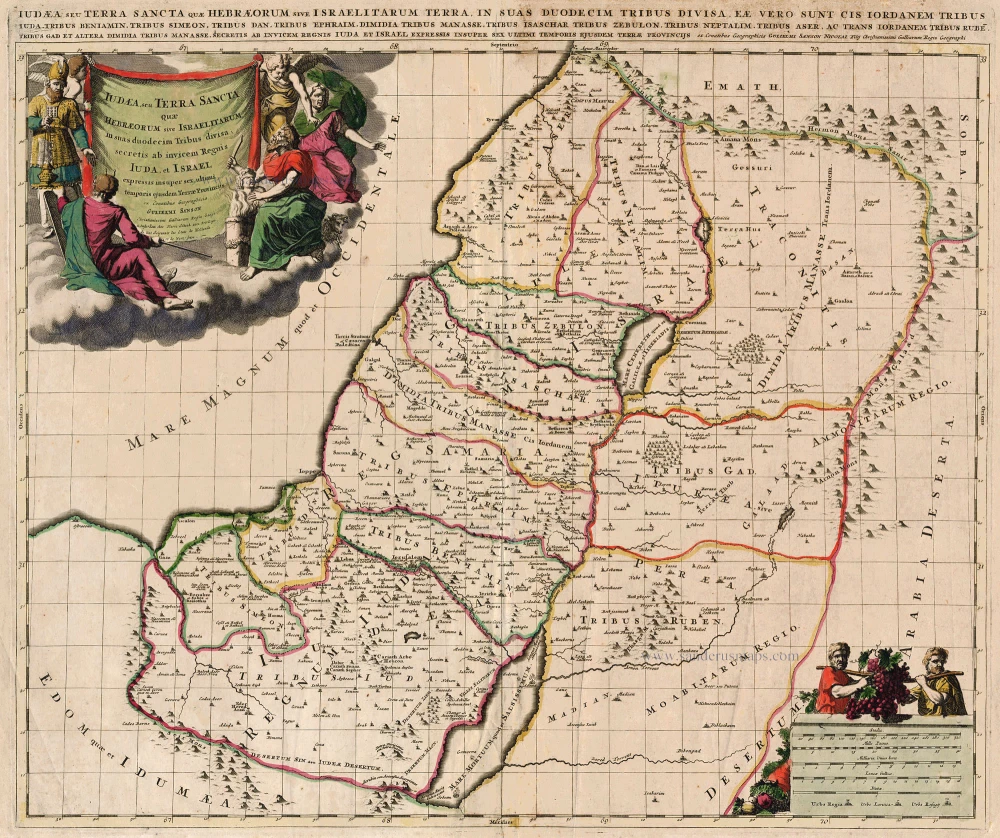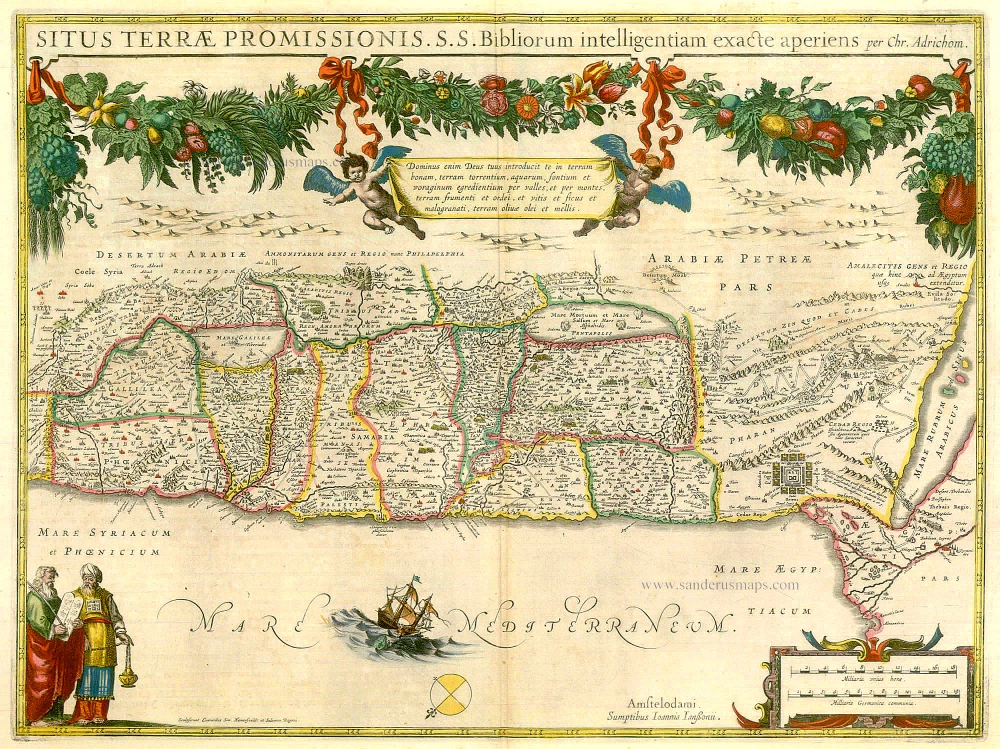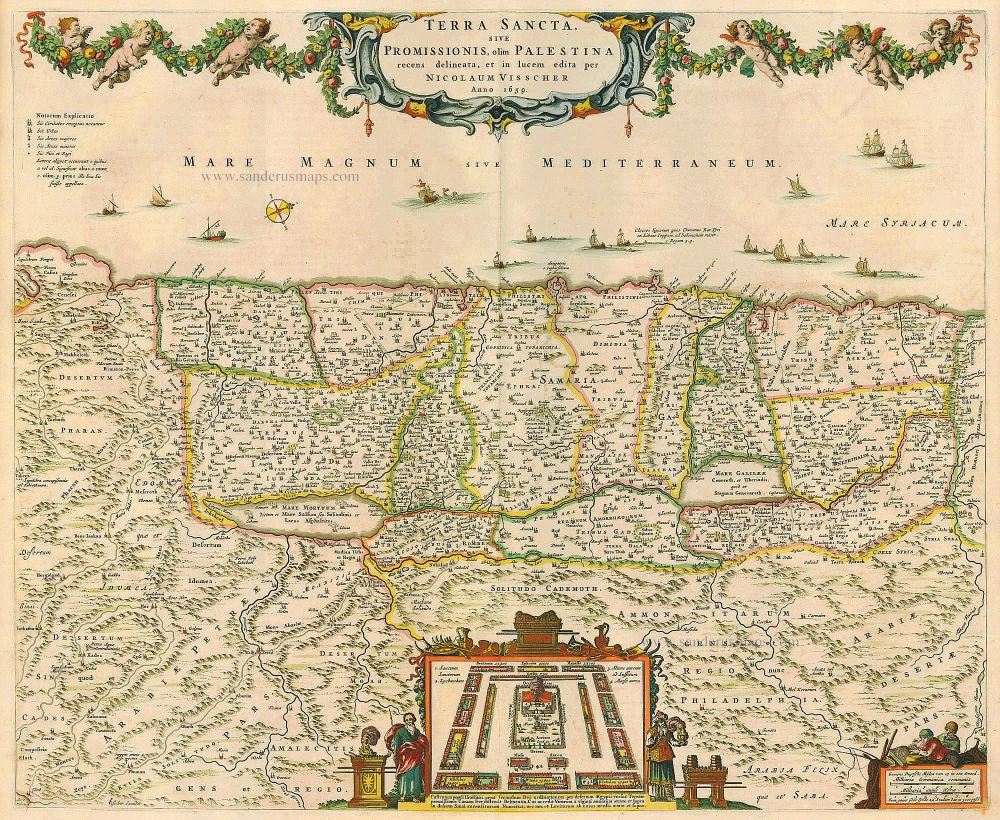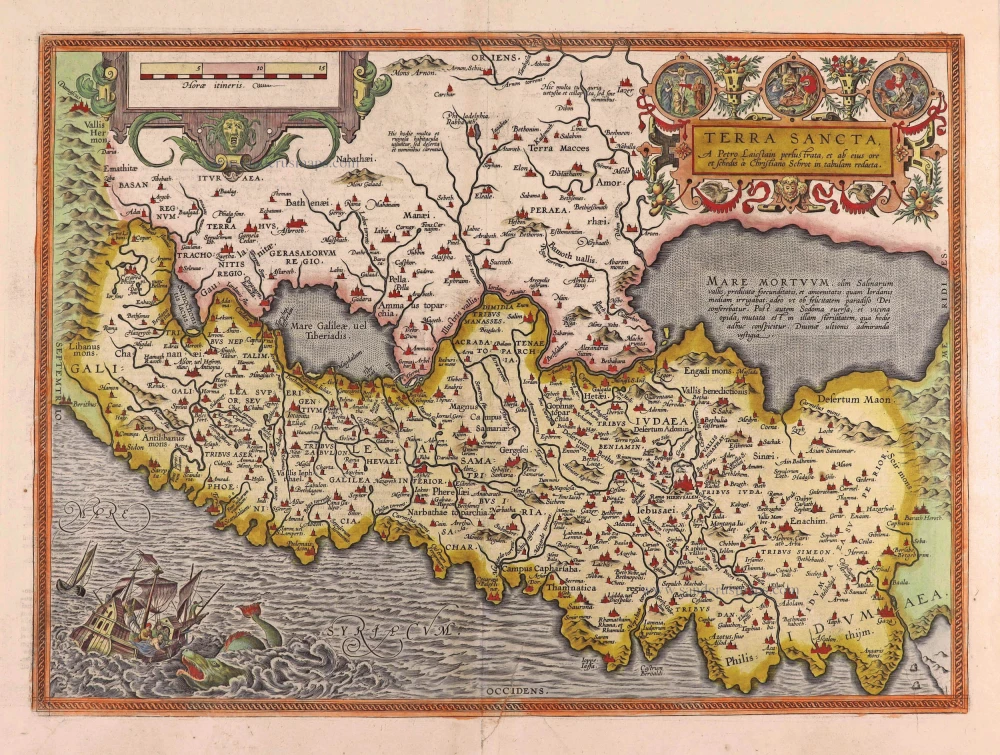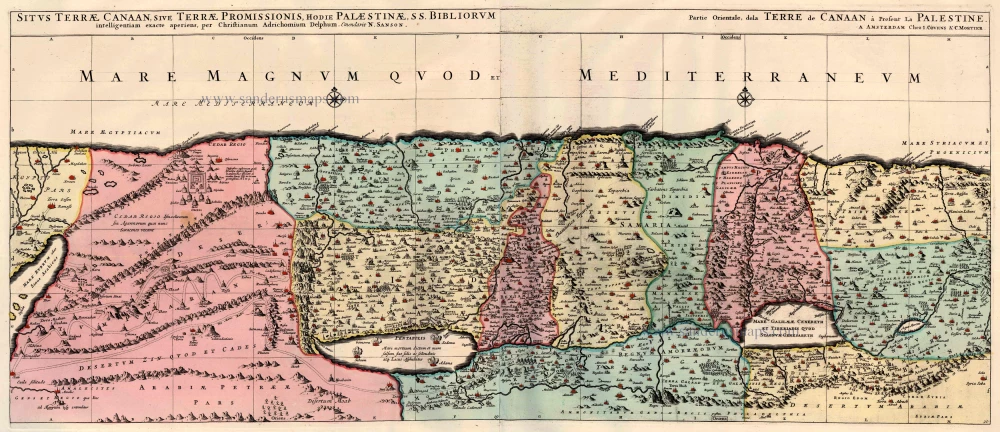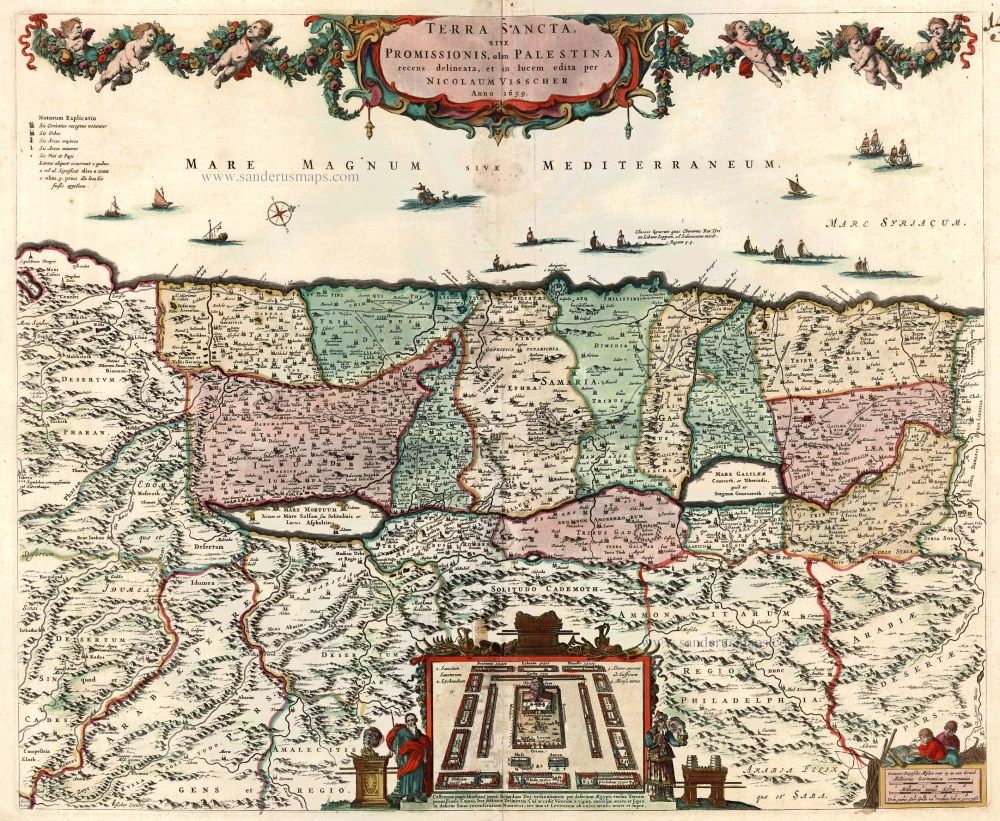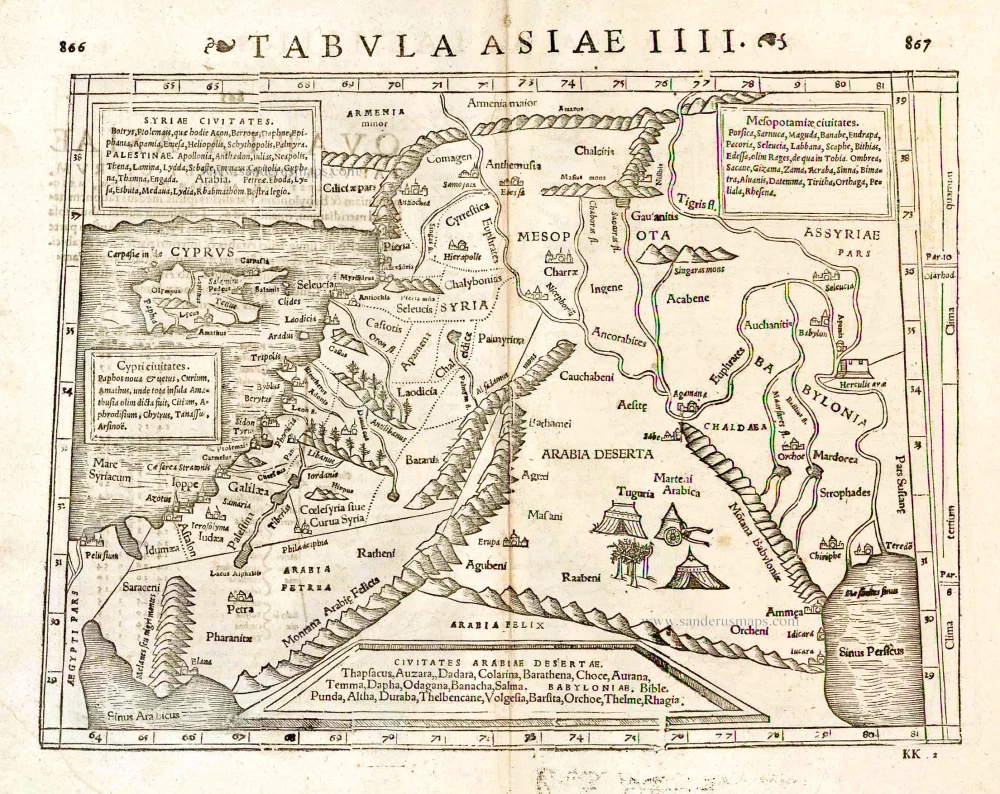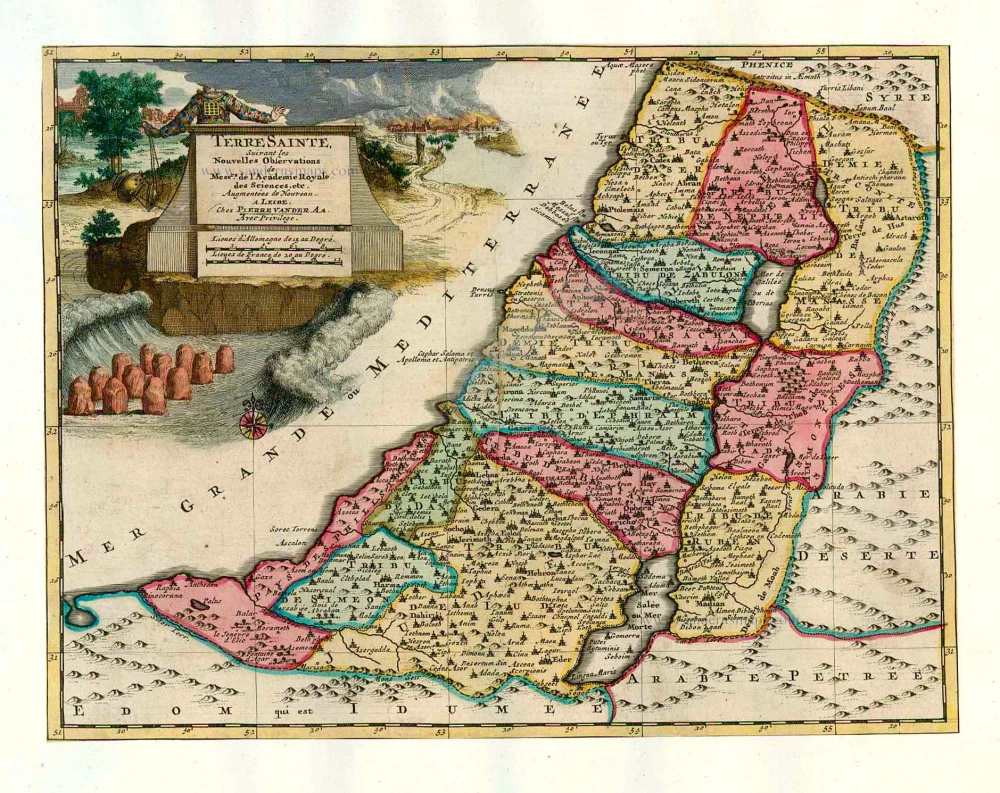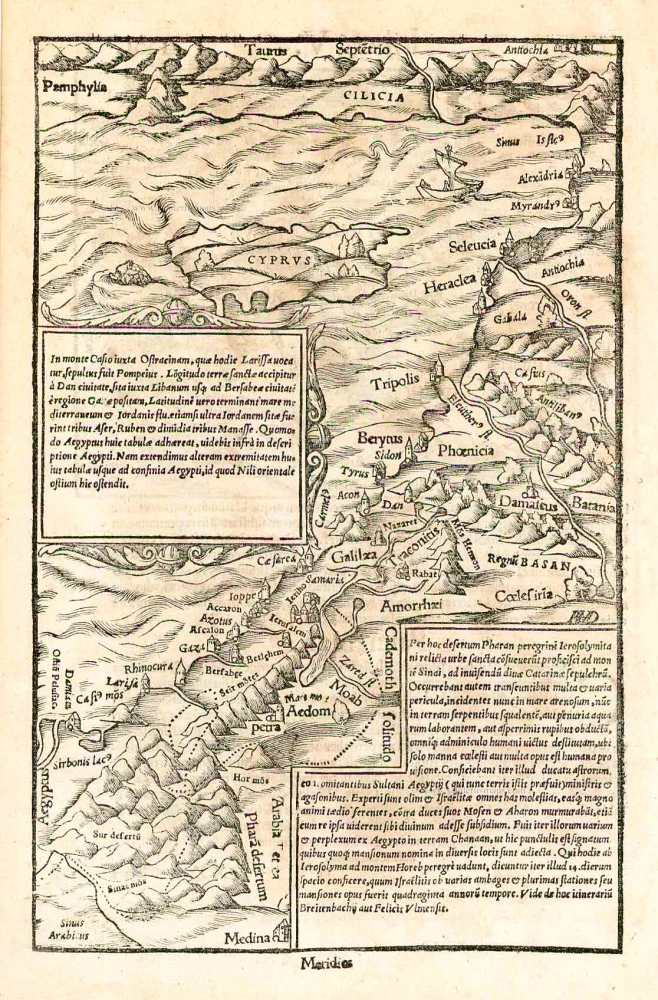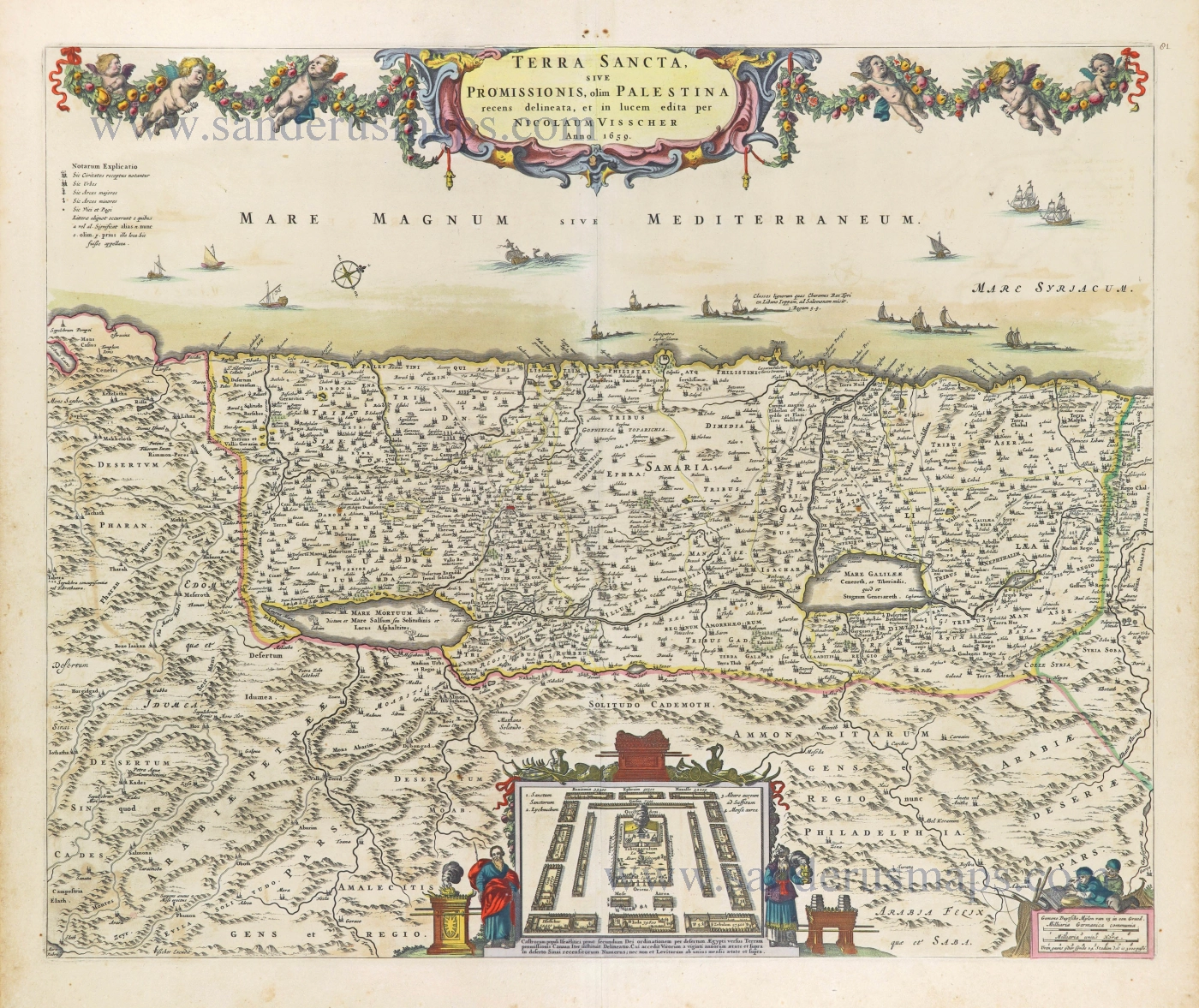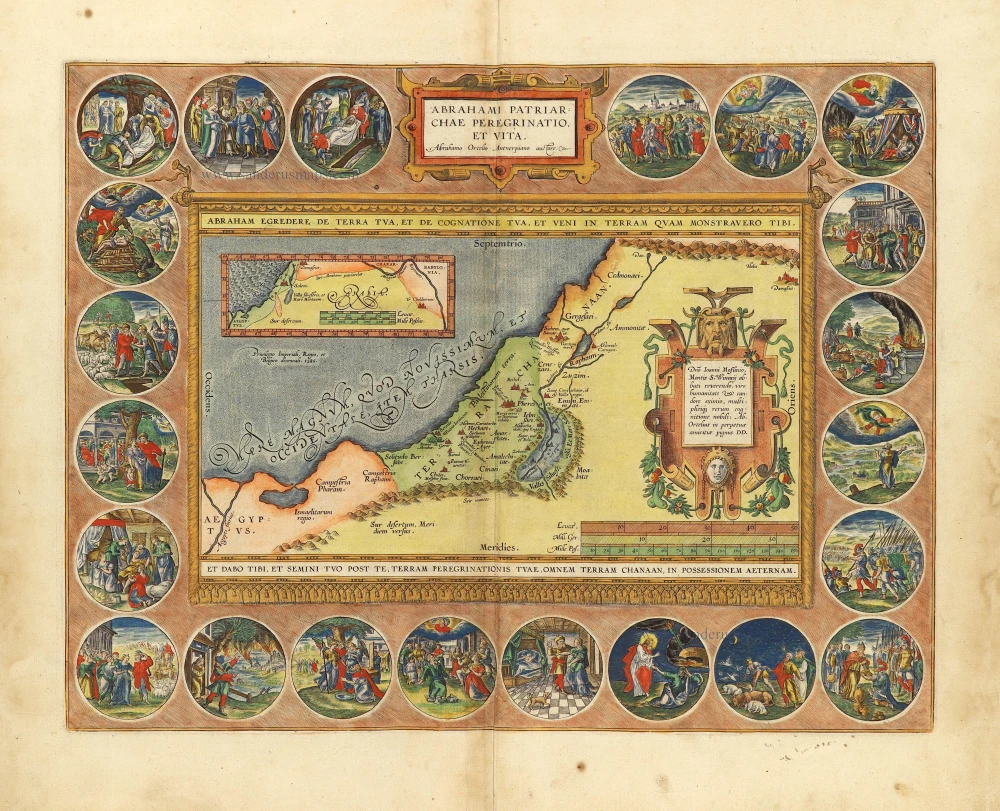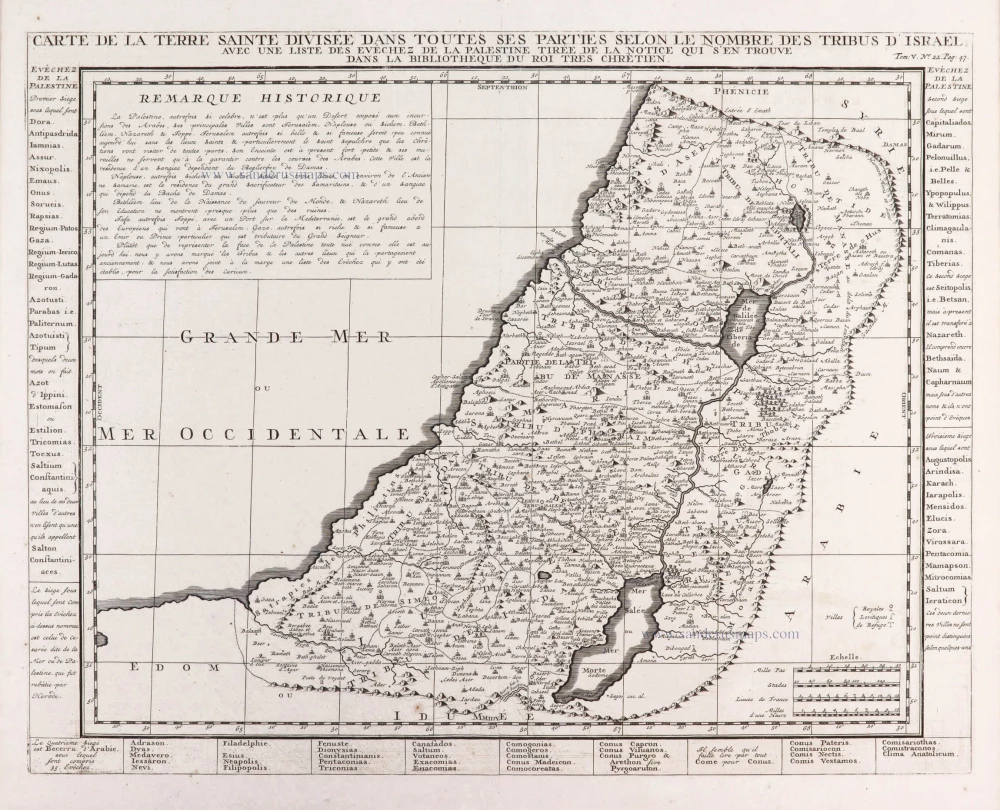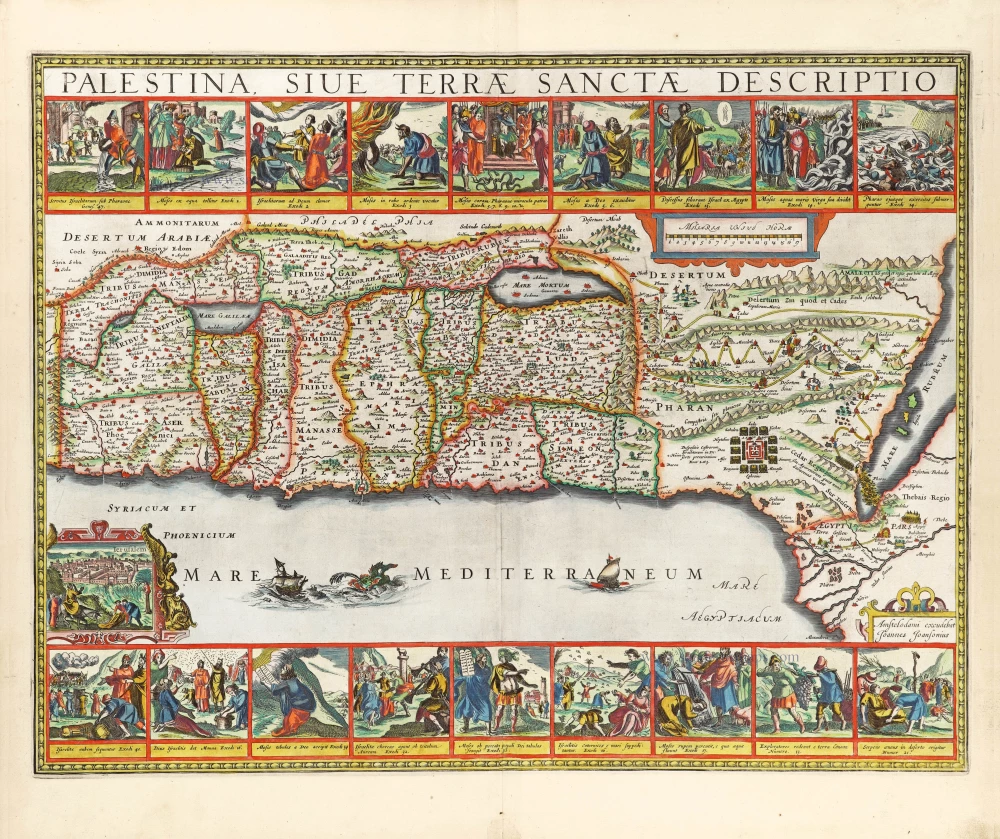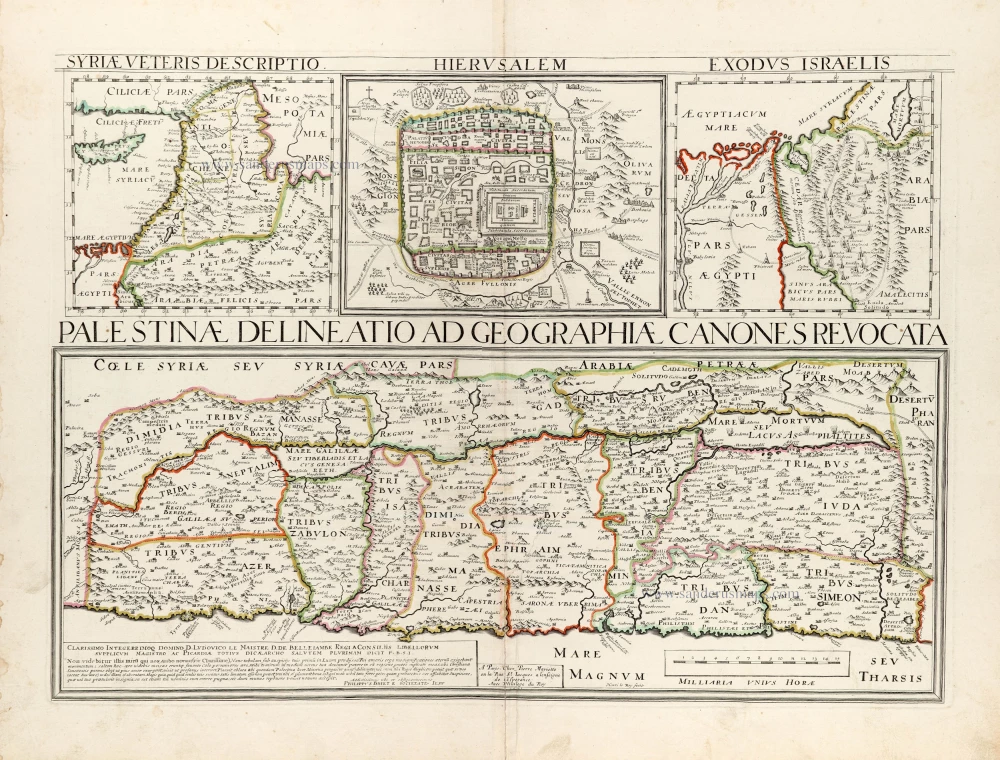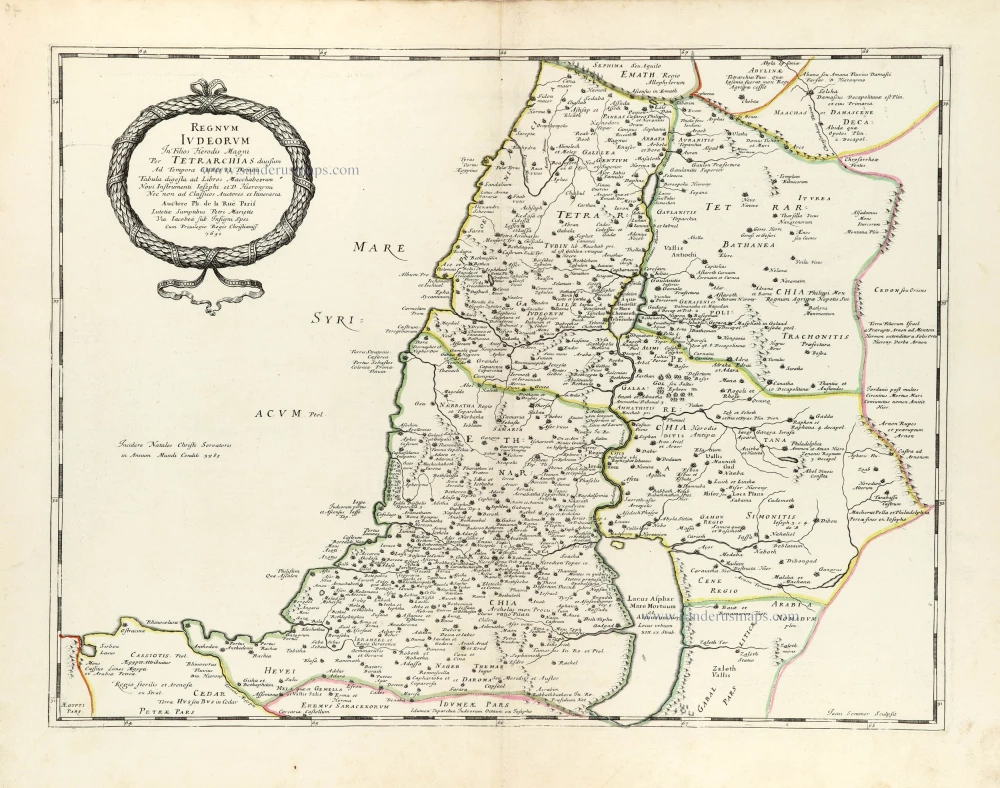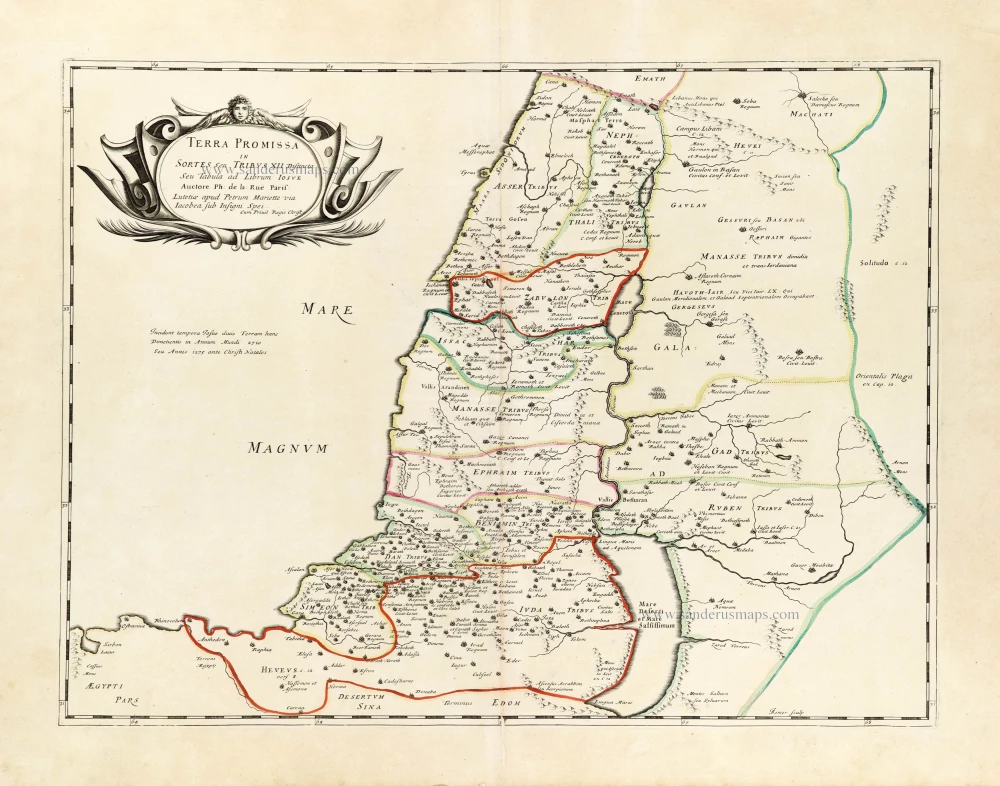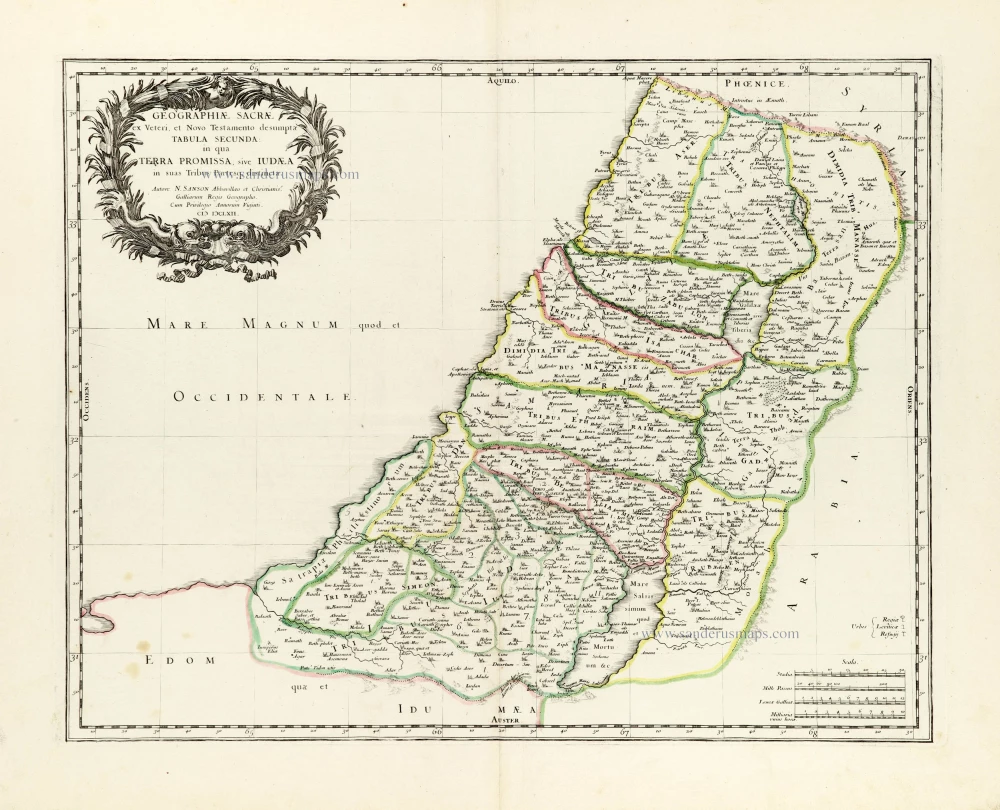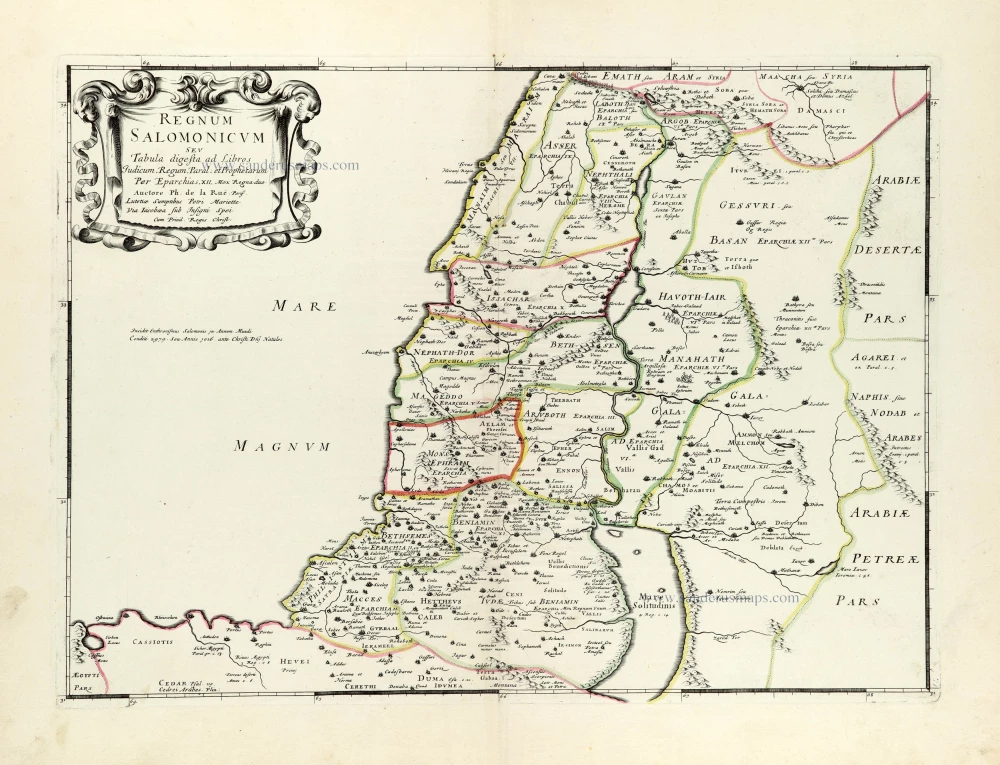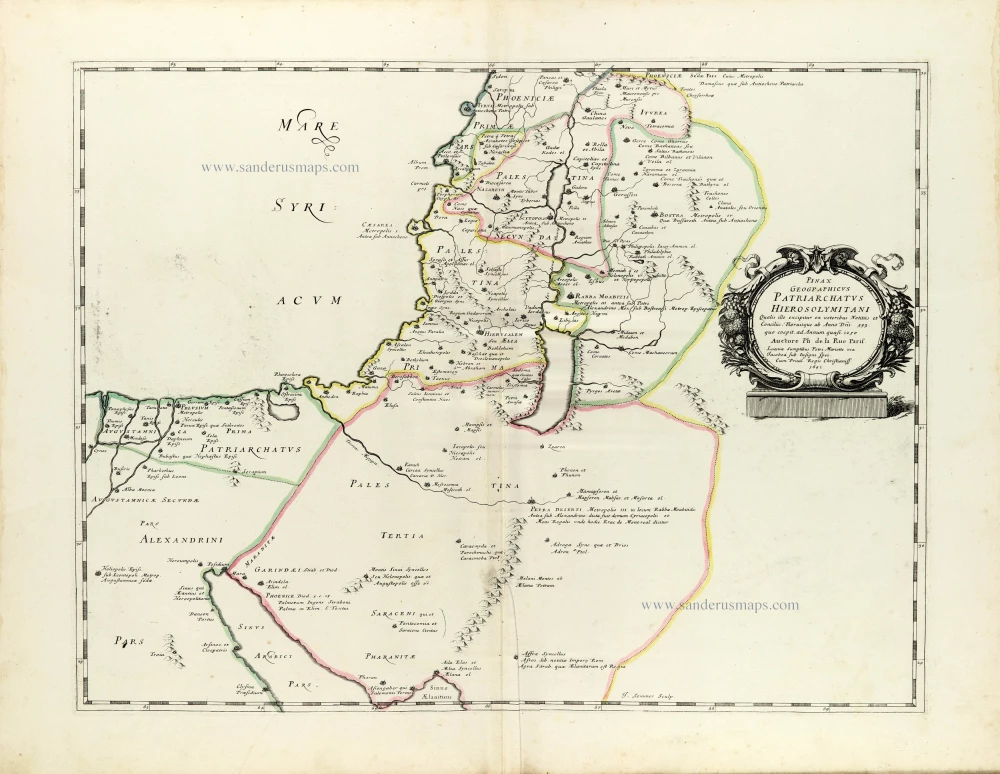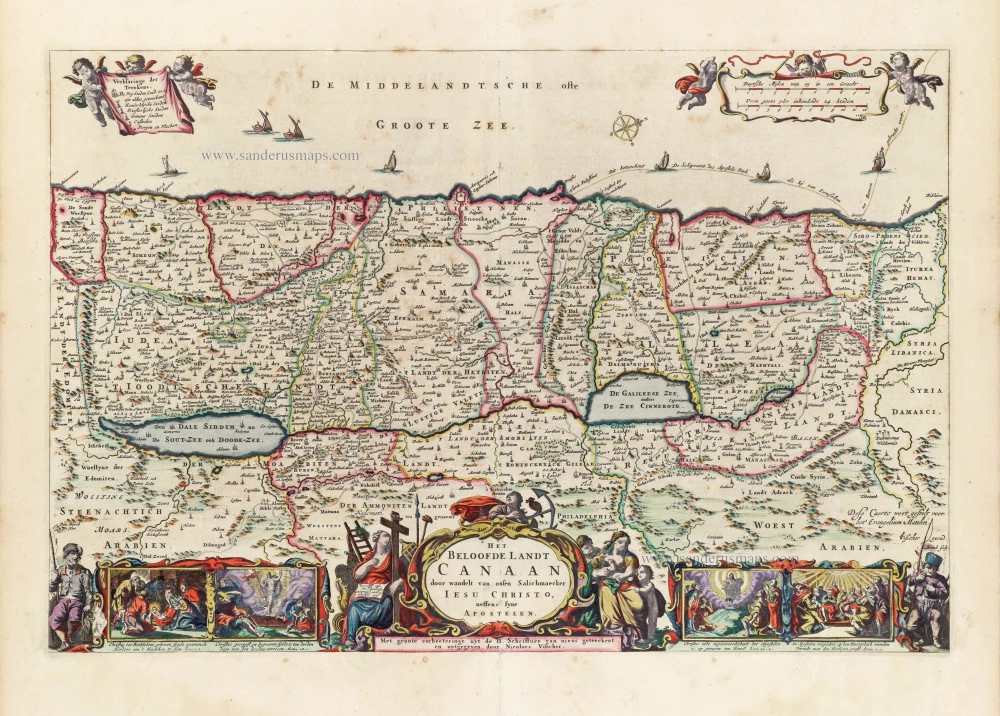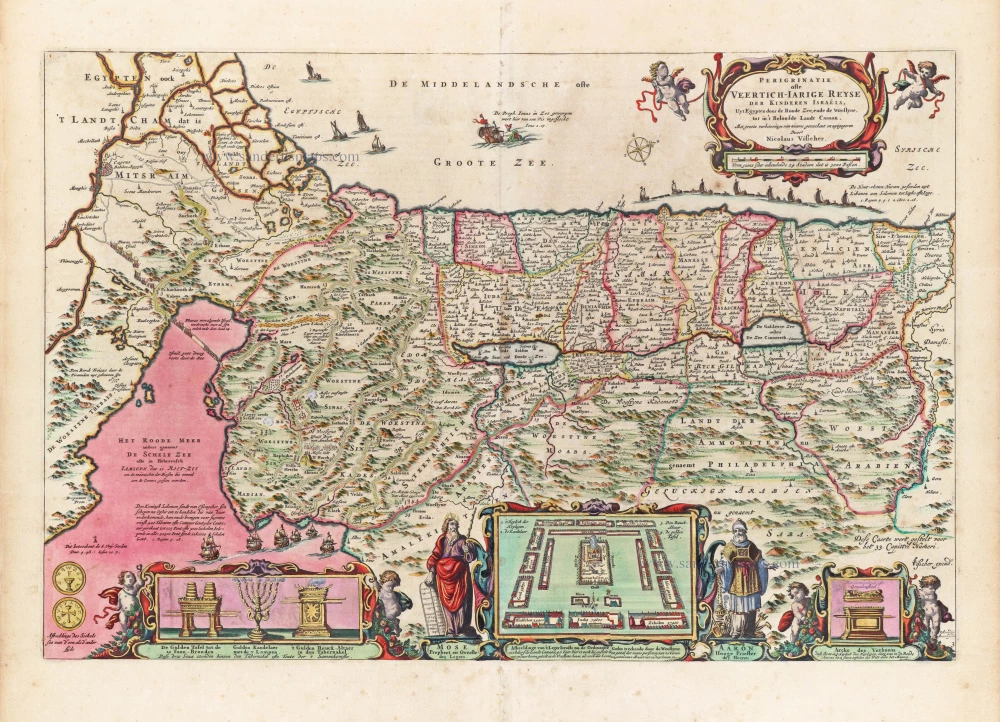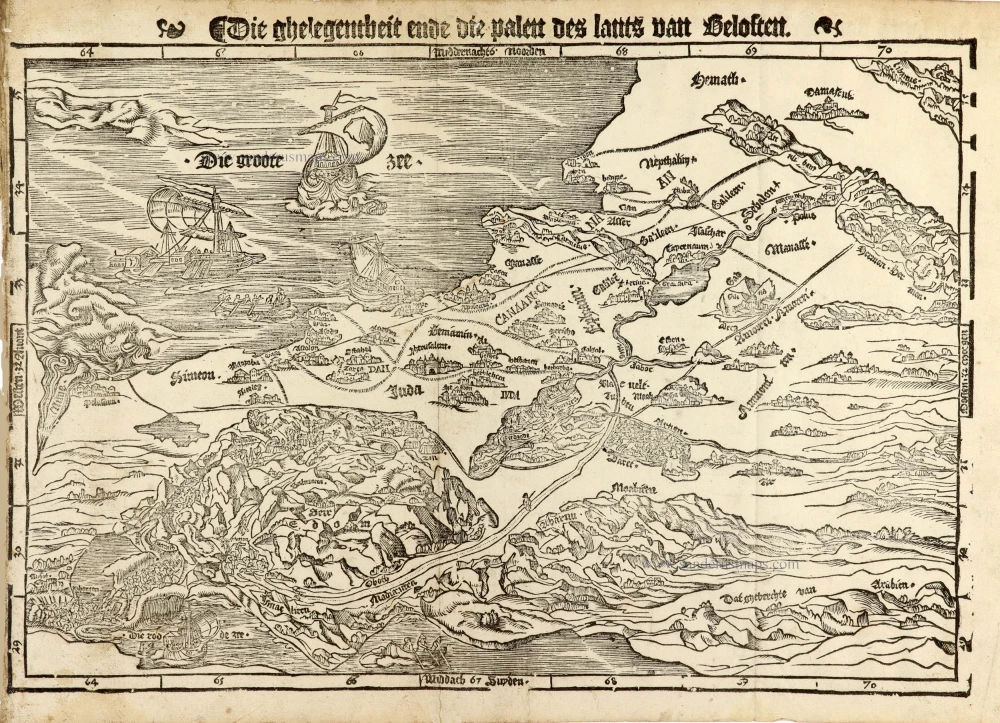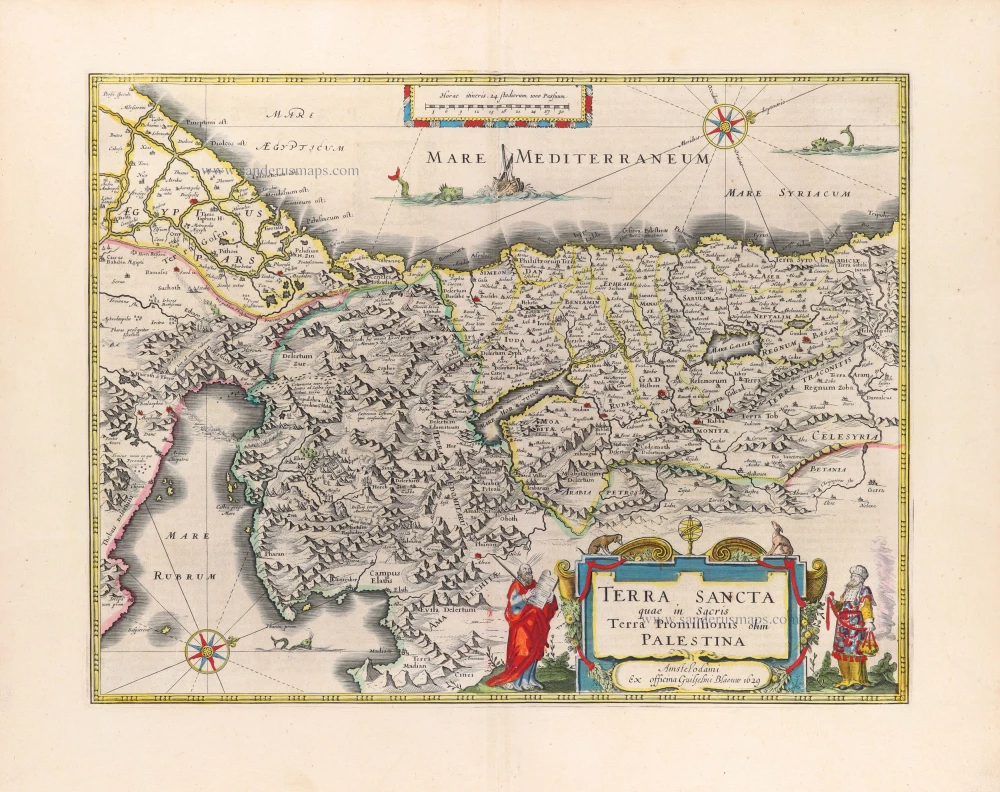Holy Land, by Georg Hornius. 1652
Georg Hornius (1620 - 1670)
Georg Hornius was born at Kemrath, Germany in 1620. He travelled in Germany and England and studied at the Universities of Groningen (1638) and Leiden (1644). In 1649, he wrote a thesis on theology at Leiden, after which he became professor of History and Geography at Harderwijk and in 1653 at Leiden. He wrote numerous works on Church history and geography. He died suddenly at Leiden in 1670, just when he was ready to accept the chair of professor at the University of Heidelberg.
The Janssonius Family
Joannes Janssonius (Arnhem, 1588-1664), son of the Arnhem publisher Jan Janssen, married Elisabeth Hondius, daughter of Jodocus Hondius, in Amsterdam in 1612. After his marriage, he settled down in this town as a bookseller and publisher of cartographic material. In 1618, he established himself in Amsterdam next door to Blaeu’s bookshop. He entered into serious competition with Willem Jansz. Blaeu when copying Blaeu’s Licht der Zeevaert after the expiration of the privilege in 1620. His activities concerned the publication of atlases, books, single maps, and an extensive book trade with branches in Frankfurt, Danzig, Stockholm, Copenhagen, Berlin, Koningsbergen, Geneva, and Lyon. In 1631, he began publishing atlases together with Henricus Hondius.
In the early 1640s, Henricus Hondius left the atlas publishing business to Janssonius. Competition with Joan Blaeu, Willem’s son and successor, in atlas production, prompted Janssonius to enlarge his Atlas Novus finally into a work of six volumes, into which a sea atlas and an atlas of the Old World were inserted. Other atlases published by Janssonius are Mercator’s Atlas Minor, Hornius’s historical atlas (1652), the townbooks in eight volumes (1657), Cellarius’s Atlas Coelestis and several sea atlases and pilot guides.
After the death of Joannes Janssonius, the shop and publishing firm were continued by the heirs under the direction of Johannes van Waesbergen (c. 1616-1681), son-in-law of Joannes Janssonius. Van Waesbergen added Janssonius's name to his own.
In 1676, Joannes Janssonius’s heirs sold by auction “all the remaining Atlases in Latin, French, High and Low German, as well as the Stedeboecken in Latin, in 8 volumes, bound and unbound, maps, plates belonging to the Atlas and Stedeboecken.” The copperplates from Janssonius’s atlases were afterwards sold to Schenk and Valck.
Dimida Tribus Manasse ... / Tribus Ruben, et Gad ... / Pars Maxima Tribus Iuda ... / Tribuum Ephraim ... / Tribus Aser ... / Tribus Simeon ...
Item Number: 27703 Authenticity Guarantee
Category: Antique maps > Asia > Holy Land
Old, antique map of Holy Land, by Georg Hornius.
Title: Dimida Tribus Manasse ... / Tribus Ruben, et Gad ... / Pars Maxima Tribus Iuda ... / Tribuum Ephraim ... / Tribus Aser ... / Tribus Simeon ...
Oriented to the southeast.
Cartographer: C. Adrichomius.
Date of the first edition: 1652.
Date of this map: 1652.
Copper engraving, printed on paper.
Size (not including margins): 840 x 1770mm (33.07 x 69.69 inches).
Verso: Blank.
Condition: Unjoined, uncoloured.
Condition Rating: A.
From: Hornius G. Accuratissima Orbis Antiqui Delineatio. Amsterdam, J. Janssonius, 1652. (Van der Krogt 1:601)
Georg Hornius (1620 - 1670)
Georg Hornius was born at Kemrath, Germany in 1620. He travelled in Germany and England and studied at the Universities of Groningen (1638) and Leiden (1644). In 1649, he wrote a thesis on theology at Leiden, after which he became professor of History and Geography at Harderwijk and in 1653 at Leiden. He wrote numerous works on Church history and geography. He died suddenly at Leiden in 1670, just when he was ready to accept the chair of professor at the University of Heidelberg.
The Janssonius Family
Joannes Janssonius (Arnhem, 1588-1664), son of the Arnhem publisher Jan Janssen, married Elisabeth Hondius, daughter of Jodocus Hondius, in Amsterdam in 1612. After his marriage, he settled down in this town as a bookseller and publisher of cartographic material. In 1618, he established himself in Amsterdam next door to Blaeu’s bookshop. He entered into serious competition with Willem Jansz. Blaeu when copying Blaeu’s Licht der Zeevaert after the expiration of the privilege in 1620. His activities concerned the publication of atlases, books, single maps, and an extensive book trade with branches in Frankfurt, Danzig, Stockholm, Copenhagen, Berlin, Koningsbergen, Geneva, and Lyon. In 1631, he began publishing atlases together with Henricus Hondius.
In the early 1640s, Henricus Hondius left the atlas publishing business to Janssonius. Competition with Joan Blaeu, Willem’s son and successor, in atlas production, prompted Janssonius to enlarge his Atlas Novus finally into a work of six volumes, into which a sea atlas and an atlas of the Old World were inserted. Other atlases published by Janssonius are Mercator’s Atlas Minor, Hornius’s historical atlas (1652), the townbooks in eight volumes (1657), Cellarius’s Atlas Coelestis and several sea atlases and pilot guides.
After the death of Joannes Janssonius, the shop and publishing firm were continued by the heirs under the direction of Johannes van Waesbergen (c. 1616-1681), son-in-law of Joannes Janssonius. Van Waesbergen added Janssonius's name to his own.
In 1676, Joannes Janssonius’s heirs sold by auction “all the remaining Atlases in Latin, French, High and Low German, as well as the Stedeboecken in Latin, in 8 volumes, bound and unbound, maps, plates belonging to the Atlas and Stedeboecken.” The copperplates from Janssonius’s atlases were afterwards sold to Schenk and Valck.

